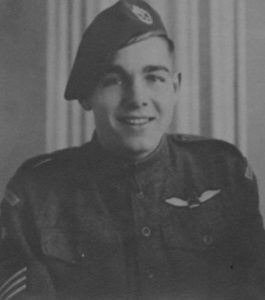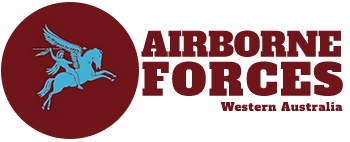21 July 1923 – 26 April 1998

Born: Gillingham, Kent.
Aged 15, Sammy attested/enlisted at Warley, Essex on 05/06 October 1938, as a boy soldier in the Royal Army Service Corps (RASC) to learn the trade of Artificer (regimental number 66814). He signed on for eight years in the Colours and four years in the Reserve.
He commenced training at the Army Technical School, St. Peter’s Barracks, Jersey. Posted to A Coy 13 Training Battalion (Boys), January 1940. Mustered as a Fitter (Motor Vehicle) Class III Group A, February 1941. Posted to 8 SM Coy. 271 Coy as a Private, March 1941.
Sammy then transferred to the Army Air Corps, October 1942 and was promoted to Corporal. Flight training was at RAF Booker, learning how to fly the de Havilland DH.82 Tiger Moth on Course No. 10, 21 Elementary Flight Training School. Initial glider training was on the General Aircraft Limited 48 Hotspur, before moving to the Heavy Glider Conversion Unit and learning to fly the Airspeed 51 Mk I Horsa Glider. Awarded Glider Army Flying Badge, 1st Pilot, July 1943.
Posted to RAF Broadwell at the rank of Sergeant, joining F Squadron, 16 Flight, 2 Wing, Glider Pilot Regiment (GPR).
Following intensive training saw active service in the D-Day invasion of Normandy flying as 2nd Pilot on OP MALLARD, taking off late on the afternoon of 06 June 1944. The Horsa carried a company of the 1st Royal Ulster Rifles to LZ “N” near Ranville. Returned to the UK on D-Day +2, 08 June.
Following return to the UK, promoted to Staff Sergeant and began training for one of the many cancelled operations that finally resulted in OP MARKET GARDEN. On 18 September 1944, flew Horsa Chalk No. 834, as 1st Pilot on the second lift, the load being elements of the 1st Parachute Brigade and two Jeeps bound for LZ “X” West of Wolfheze.
After landing, GPR pilots regrouped with their squadrons. After six days of intense fighting, F Squadron was located in the woods to the North-East of the Hartenstein Hotel, Oosterbeek. Sammy sustained mortar shrapnel wounds to the head, chest and right hand on 24 September. As one of the walking wounded, was captured and made a Prisoner of War on 25 September 1944.
After being transported by train in cattle trucks with approximately 400 other mostly wounded airborne soldiers, Sammy arrived at Stalag XIB, Fallingbostel on 28 September. He was registered as POW No.117848. This was only a transit camp for some Glider Pilots, who were transferred in early October to Stalag VIIIC Sagan. On 08 February 1945, the camp was evacuated ahead of the advancing Russian Army and the “Long March” began. Following 31 days on the road and having walked approximately 600 kilometres in atrocious conditions, survivors of the walk arrived at Stalag IXB, Bad Orb. After a total of 197 days in captivity, he was liberated by the US Army and repatriated to the UK, arriving on 10 April 1945.
Post war, Sammy continued to serve with B Squadron GPR, Netheravon. In December 1949, he was awarded the Parachute Badge. He then transferred out of the GPR in July 1951 and completed 10 years with the Airborne at 16 A/B Workshop, Royal Electrical and Mechanical Engineers (REME).
He was discharged from REME on 20 July 1965 at the rank of Warrant Officer 1st Class, having served a total of 26 years and 289 days. During this time, also served in Egypt, Cyprus, Jordan and Germany.
In October 1965, he immigrated to Perth, WA with wife Lotti & son John, staying initially at Point Walter, before buying a house in Dianella. In 1968, he was one of the founding members of the Pegasus Association (WA), along with John Hately & other ex airborne veterans. Over the years, Sammy served at various times as President and Treasurer.
Glider Pilots “The Total Soldier”.
Nihil Est Impossibilis (Nothing Is Impossible).
